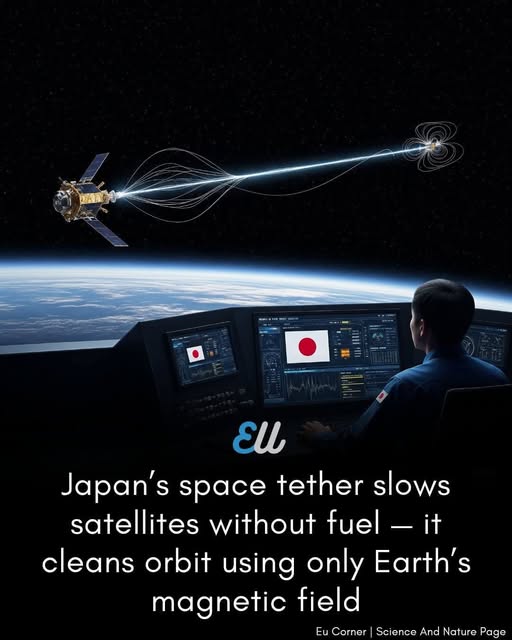
Japan’s superconducting space tether can deorbit satellites using Earth’s magnetic field
Japan has developed a space-age cleanup system that could deorbit dead satellites without fuel or explosions — using only Earth’s magnetic field. It’s a superconducting tether, made of ultra-thin niobium alloy, that drags space debris into lower orbit by generating electric currents as it slices through the planet’s magnetosphere.
The idea is simple in theory, but stunning in execution: As the tether travels at orbital speeds through Earth’s magnetic field, it induces a current — and this in turn produces a Lorentz force that opposes its motion. Over time, this force slows down the object, gently reducing altitude until it burns in the atmosphere.
Developed by JAXA in collaboration with Tokyo University, the tether is no longer a concept — it’s already been tested on micro-satellites launched in low Earth orbit. In one test, a 700-meter-long tether successfully lowered a dead payload by over 120 km within two weeks — with no propulsion, no fuel, and no risk of explosion.
Unlike traditional deorbit methods, this technique doesn’t require contact with the satellite itself. A deployable “net satellite” attaches the tether to any dead or defunct object — then activates and drags it down slowly, passively, and safely.
With over 30,000 pieces of space junk threatening the ISS and future launches, Japan’s tether could become the standard orbital janitor for the next century. It’s cost-effective, passive, and scalable — ideal for large satellite constellations like Starlink.
Cleaning space doesn’t require explosions anymore. Just a wire, superconductors, and the quiet power of physics.
